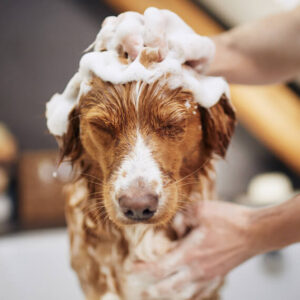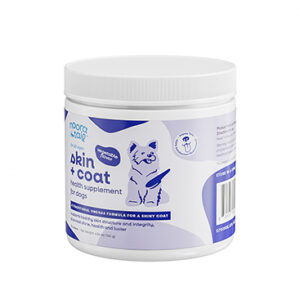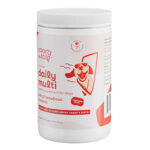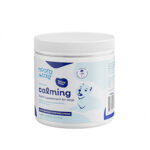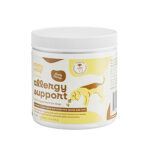1. Provide a Safe Space:

As dog owners, we cherish the bond we share with our furry friends. However, even the most well-behaved pooches can experience moments of anxiety or agitation. Fortunately, there are various proven and effective ways to soothe and calm your canine companion.
1. Establish a Sanctuary of Calm
Just like humans, dogs crave a space where they feel protected and at ease. Designate a specific area in your home as your dog’s safe haven, such as a cozy crate or a secluded corner with a comfortable bed and a calming pheromone diffuser. Diffusers release calming scents that mimic the natural pheromones released by nursing mothers, creating a sense of security and relaxation.
2. Exercise, Exercise, Exercise!
Physical activity is not only beneficial for your dog’s overall health but also serves as an excellent stress reliever. Engage your dog in regular exercise through daily walks, games of fetch, or interactive puzzle toys. Exercise helps burn off excess energy and stimulates the release of endorphins, which have calming effects.
3. The Power of Music
Music has therapeutic benefits for both humans and animals. Create a calming playlist for your dog filled with soothing classical melodies, gentle jazz tunes, or nature sounds. Soft, ambient music can help reduce anxiety, promote relaxation, and mask external noises that may trigger stress.
4. Massage Therapy
Just like a gentle massage can soothe your own tensions, it can also work wonders for your furry friend. Apply gentle pressure and strokes to your dog’s head, neck, back, and hindquarters. Massage helps stimulate blood flow, reduce muscle tension, and promotes relaxation.
5. Training and Positive Reinforcement
Obedience training and positive reinforcement not only strengthen your bond with your dog but also instill a sense of calm and confidence. Reward your dog with treats, praise, or playtime whenever they exhibit desired behaviors, such as sitting, staying, or remaining calm in stressful situations. Positive reinforcement helps your dog associate desirable outcomes with calm behavior, promoting long-term tranquility.
6. Natural Calming Supplements
If your dog experiences chronic anxiety or stress, consider consulting with a veterinarian about natural calming supplements. Products containing ingredients such as L-theanine, chamomile, or valerian root can have a calming effect on dogs without the side effects of prescription medications.
7. Calming Wraps and Pressure Shirts
Thunder shirts and other calming wraps apply gentle pressure to your dog’s body, creating a feeling of security and relaxation. These wraps mimic the swaddling effect that can provide comfort to anxious dogs.
8. Pet-Friendly Calming Aids
There are various pet-specific calming aids available in the market, such as pheromone sprays, anxiety blankets, and calming chews. These products release soothing scents or provide a sense of comfort that can help reduce stress and promote relaxation.
Conclusion
Calming your anxious dog is a multifaceted endeavor that may require a combination of techniques. By providing a safe space, engaging in regular exercise, utilizing calming aids, and seeking professional advice when necessary, you can create a calm and stress-free environment for your furry friend. Remember, every dog is unique, so observe your dog’s specific needs and tailor your approach accordingly. By fostering a state of tranquility, you can strengthen your bond with your dog and enhance their overall well-being.
2. Exercise and Mental Stimulation:

As a dog lover, witnessing your furry companion in a state of anxiety can be distressing. Fortunately, there are numerous effective ways to soothe and calm your beloved pet. Here are ten proven techniques to alleviate your dog’s stress and restore tranquility:
1. Calming Signals:
- Avoid direct eye contact: In the canine world, direct eye contact can be perceived as confrontational. Instead, avert your gaze to communicate a non-threatening demeanor.
- Lower your posture: Crouch down or sit on the floor to appear less intimidating to your dog.
- Cover your nose: Dogs rely heavily on scent, so covering your nose can reduce the perceived threat level.
- Speak calmly: Your tone of voice plays a crucial role in conveying reassurance. Use a soothing, gentle voice when addressing your dog.
2. Exercise and Mental Stimulation:
- Regular exercise: Physical activity releases endorphins, which have calming effects on both humans and dogs. Aim for at least 30 minutes of vigorous exercise daily.
- Mental stimulation: Provide mental stimulation through interactive toys, training sessions, and nose work exercises. These activities engage your dog’s mind and reduce stress.
3. Safe and Comfortable Space:
- Designated sanctuary: Create a specific area for your dog that is quiet, dimly lit, and safe. This could be a crate, a bed in a corner, or a cozy den.
- Hiding place: Provide a secluded spot where your dog can escape from overwhelming situations, such as loud noises or unfamiliar people.
- Pharomone therapy: Synthetic pheromone diffusers or sprays can mimic the calming scents produced by nursing mothers, creating a sense of security for your dog.
4. Touch and Pressure:
- Gentle massage: Applying gentle pressure to specific points on your dog’s body can release tension and promote relaxation. Focus on areas such as the head, neck, and chest.
- Thunder shirt: A thunder shirt is a snug-fitting garment that applies constant pressure to your dog’s body, creating a calming effect.
5. Music and Sounds:
- Classical music: Studies have shown that classical music can have a calming effect on dogs. Create a soothing playlist and play it at a low volume.
- White noise: White noise machines or recordings can block out distracting sounds and create a more tranquil environment.
6. Sensory Stimulation:
- Lick mats: Lick mats are designed to engage your dog’s tongue, providing a calming and enriching experience.
- Chewing: Chewing on safe toys or treats can help reduce anxiety and provide a sense of comfort.
7. Food and Treats:
- Special treats: Reward your dog for calm behavior or during stressful situations. This positive reinforcement can help associate calmness with positive experiences.
- Calming supplements: Consult your veterinarian about calming supplements such as L-theanine or chamomile, which can have a soothing effect on some dogs.
8. Professional Help:
- Veterinarian consultation: If your dog’s anxiety is severe or persistent, seek professional help from your veterinarian. They can rule out underlying medical conditions and recommend appropriate treatments.
- Animal behaviorist: A certified animal behaviorist can assess your dog’s behavior and provide tailored training and behavior modification plans to reduce anxiety.
9. Patience and Consistency:
- Time and effort: Calming an anxious dog takes time and consistent effort. Avoid overwhelming your dog and work at their pace.
- Reward positive behavior: Reward your dog for calm and submissive behavior to reinforce desired reactions.
10. Avoid Punishment:
- Positive reinforcement: Focus on positive reinforcement rather than punishment. Punishment can worsen anxiety and damage your bond with your dog.
- Fear-free training: Implement fear-free training techniques that prioritize your dog’s safety, comfort, and choice.
Remember, every dog is different, and the most effective calming techniques will vary. Experiment with different approaches and observe your dog’s response to determine what works best for them. By implementing these techniques, you can create a more serene and stress-free environment for your beloved furry companion.
3. Desensitization and Counter-Conditioning:
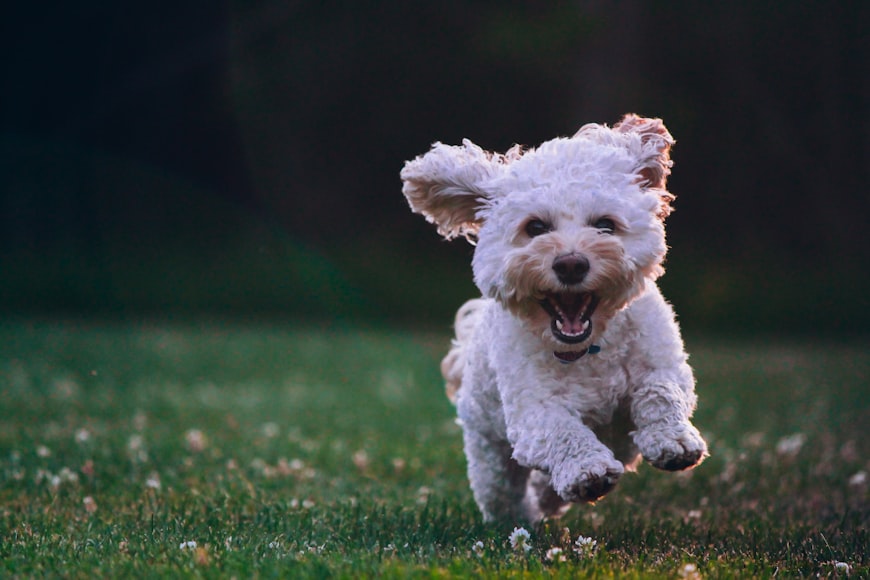
As a devoted dog parent, witnessing your furry companion suffer from anxiety can be unsettling. The good news is that there are proven ways to help our canine friends find tranquility and live happier lives. In this article, we explore three effective methods to calm an anxious dog:
1. Behavioral Training
- Basic Obedience: Establish clear commands and boundaries with positive reinforcement. This instills a sense of structure and predictability.
- Impulse Control: Teach your dog exercises like “sit,” “stay,” and “leave it” to help them control their reactions in stressful situations.
- Desensitization and Counter-Conditioning: This technique gradually exposes your dog to a feared trigger while providing treats and positive reinforcement. Over time, your dog will associate the trigger with positive experiences and become less anxious around it.
2. Environmental Management
- Create a Safe Haven: Designate a quiet and comfortable spot in your home where your dog can retreat when feeling overwhelmed. Make sure it has a soft bed, toys, and minimal distractions.
- Avoid Triggers: Identify and avoid situations or environments that typically make your dog anxious. If unavoidable, limit exposure and use training techniques to help your dog cope.
- Provide Exercise and Enrichment: Regular physical and mental exercise can help reduce anxiety and prevent boredom. Engage your dog in interactive games, walks, and training sessions.
3. Medication
In some cases, medication may be necessary to manage severe anxiety. Consult a veterinarian to determine if medication is right for your dog and to establish the appropriate dosage and type.
- Antidepressants: These drugs can help to regulate serotonin and norepinephrine levels in the brain, which can reduce anxiety symptoms.
- Anti-anxiety Medications: These medications are designed to provide immediate relief from anxiety. They should be used short-term and only under the supervision of a veterinarian.
Additional Tips
- Stay Calm: Dogs mirror their owners’ emotions. Remaining calm and reassuring can help your dog feel less stressed.
- Provide a Calming Environment: Use calming music, aromatherapy, or pheromone diffusers to create a relaxing atmosphere.
- Massage: Gentle massage can help to soothe your dog’s muscles and promote relaxation.
- Consider a Thunder Shirt: These snug-fitting garments can provide a sense of security and reduce anxiety during stressful events.
Remember, calming an anxious dog requires patience, consistency, and a holistic approach. By implementing these techniques, you can help your furry friend overcome their anxiety and enjoy a happier, more fulfilling life.
4. Massage and Calming Pressure:

When our beloved canine companions exhibit signs of anxiety or stress, it’s our responsibility as pet owners to provide them with comfort and tranquility. Among the various techniques available, massage and calming pressure have proven to be effective in reducing stress levels and promoting relaxation in dogs.
The Power of Massage
Massage involves applying gentle, rhythmic strokes to your dog’s body using your hands or a soft brush. The sensory stimulation provided by massage activates the parasympathetic nervous system, which is responsible for calming the body and inducing relaxation.
Massage has numerous benefits for dogs, including:
- Releasing endorphins: Endorphins are hormones that have pain-relieving and mood-boosting effects, reducing stress and promoting relaxation.
- Stimulating blood flow: Massage helps improve circulation, delivering oxygen and nutrients throughout the body, which can reduce muscle tension and promote overall well-being.
- Reducing muscle tension: Gentle massage techniques can help loosen tight muscles and relieve tension, which can contribute to anxiety and discomfort.
How to Massage Your Dog
- Start by creating a calm and relaxing environment.
- Use gentle, circular motions and avoid applying too much pressure.
- Focus on areas such as the chest, back, and head.
- Observe your dog’s body language and stop if they seem uncomfortable.
Calming Pressure: The Squeeze Technique
Calming pressure, also known as the “squeeze technique,” involves applying firm but gentle pressure to specific areas of your dog’s body. This technique mimics the feeling of being swaddled or held close, which can provide a sense of security and reduce anxiety.
How to Apply Calming Pressure:
- Wrap a towel or blanket around your dog’s chest, ensuring it’s snug but not too tight.
- Apply gentle pressure to the chest for a few minutes.
- Gradually increase the pressure if your dog seems comfortable.
- Hold the pressure for 5-10 minutes, or until your dog shows signs of relaxation.
Additional Tips for Calming Your Dog
In addition to massage and calming pressure, there are several other effective ways to calm a dog, including:
- Providing a safe space: Create a quiet and comfortable area where your dog can retreat to and feel safe.
- Using calming chews or diffusers: Certain scents, such as lavender and chamomile, have calming effects on dogs.
- Exercise: Regular exercise can help release pent-up energy and reduce stress.
- Training and socialization: Well-trained and socialized dogs are less likely to experience anxiety in unfamiliar situations.
- Medication: In some cases, medication may be prescribed by a veterinarian to manage severe anxiety.
By implementing these techniques and considering the underlying causes of your dog’s anxiety, you can help provide your furry friend with the comfort and tranquility they deserve. Remember, every dog is different, so observe their body language and adjust your approach accordingly. With patience and love, you can create a calm and stress-free environment for your beloved companion.
5. Training and Obedience:

As devoted dog owners, we strive to ensure our furry friends live happy and stress-free lives. However, even the most well-behaved dogs can experience moments of anxiety or overexcitement. Fortunately, there are effective ways to calm and comfort our beloved companions. Here are five proven techniques to soothe your canine’s nerves:
1. Gentle Touch and Massage:
Physical touch has a remarkable calming effect on dogs. Soft petting, gentle ear rubs, and soothing massages can release endorphins and oxytocin, hormones associated with relaxation. When your dog is feeling anxious, provide them with a calming touch to help them unwind.
2. Environmental Management:
Creating a safe and relaxing environment for your dog is essential. Identify and remove any potential stressors from their surroundings, such as loud noises, unfamiliar people or animals, and crowded spaces. Provide your dog with a quiet and comfortable bed where they can retreat to when they need a break.
3. Pheromone Diffusers and Sprays:
Pheromones are natural chemical messengers released by animals that convey specific emotional signals. Diffusers and sprays that mimic calming pheromones can create a relaxing atmosphere for your dog. These products are often recommended for dogs experiencing separation anxiety or other stress-related behaviors.
4. Music Therapy:
Music can have a profound effect on a dog’s mood. Soft, classical music or nature sounds can help soothe their nerves and reduce anxiety. Create a calming playlist or tune in to a pet-friendly radio station to provide your dog with a relaxing musical backdrop.
5. Training and Obedience:
Obedience training not only provides structure and control but also reduces anxiety in dogs. By teaching your dog basic commands such as “sit,” “stay,” and “come,” you establish clear expectations and give them a sense of purpose. Obedience exercises help dogs focus their attention, which can calm them down in stressful situations.
Additional Tips:
- Exercise is a great way to release pent-up energy and reduce stress. Take your dog for regular walks or engage them in interactive play.
- Provide your dog with plenty of mental stimulation through toys, puzzles, and interactive games.
- Avoid punishing your dog for anxious behavior. Instead, focus on positive reinforcement and reward them for calm and relaxed demeanor.
- If your dog’s anxiety persists or significantly impacts their quality of life, seek professional help from a veterinarian or certified animal behaviorist.
Remember, every dog is unique, and what works for one may not be effective for another. Experiment with different calming techniques to find the best combination that suits your dog’s personality and needs. By providing them with a safe, relaxing, and loving environment, you can help your canine companion lead a happy and stress-free life.
6. Music and White Noise:
The bond between humans and dogs is inextricably linked, and the companionship they provide is invaluable. However, even the most well-behaved dogs can experience moments of restlessness or anxiety. As their caretakers, it’s our responsibility to provide them with a serene environment that promotes their well-being. Here are six effective ways to calm your dog and create a peaceful haven:
1. Exercise: The Power of Physical Activity
Dogs are active creatures with a natural instinct to move. Regular exercise not only keeps them physically fit but also releases endorphins that have calming effects. Engage your dog in brisk walks, playtime at the park, or interactive fetch sessions to tire them out and reduce their stress levels.
2. Crate Training: A Safe and Secure Retreat
A crate can provide your dog with a sense of security and calm. It’s important to introduce the crate gradually, ensuring it’s a positive experience. Place treats or favorite toys inside to make it inviting. When used correctly, the crate becomes a safe haven where your dog can retreat for rest and relaxation.
3. Massage: The Touch of Tranquility
Massage has therapeutic benefits for dogs as well. Gentle strokes can help relax tense muscles, promote circulation, and ease anxiety. Focus on areas where your dog experiences tension, such as the shoulders, neck, and chest. Avoid using deep pressure, and respect your dog’s boundaries.
4. Calming Scents: Aromatherapy for Dogs
Certain scents have calming effects on dogs. Diffuse lavender, chamomile, or marjoram essential oils in a well-ventilated area. Alternatively, you can use calming sprays or wipes on your dog’s bedding or around their environment. Avoid using scented candles as they may contain harmful chemicals.
5. Thunder Shirts: Pressure Point Therapy
Thunder shirts are snug-fitting garments that apply gentle pressure to your dog’s body, similar to a gentle hug. This pressure can trigger a calming response by activating pressure points that release serotonin. Thunder shirts can be helpful for dogs who experience anxiety during thunderstorms, fireworks, or other loud noises.
6. Music and White Noise: Blocking Out Distractions
Classical music or white noise can block out distracting sounds and create a calming atmosphere. Use headphones for your dog to minimize noise sensitivity. Research suggests that certain frequencies and tempos can have a soothing effect on dogs. White noise, such as the sound of a fan or running water, can mask other noises and provide a comforting backdrop.
Conclusion
Creating a calm and relaxing environment for your dog is essential for their well-being. By implementing these six effective methods, you can help your furry friend cope with anxiety, reduce stress, and live a happier and more peaceful life. Remember to consult with your veterinarian if your dog experiences persistent or severe anxiety, as there may be underlying medical conditions that require professional attention.
7. Grooming and Bathing:
As a loving dog owner, witnessing your furry friend feeling anxious can be both heartbreaking and frustrating. Fortunately, there are a variety of effective methods you can implement to help your dog overcome their anxiety and live a more relaxed and happy life.
1. Exercise: A Powerful Stress Reliever
Regular exercise is crucial for both the physical and mental well-being of your dog. Physical activity not only releases endorphins, which have mood-boosting effects, but it also helps to burn off excess energy that can contribute to anxiety. Aim for at least 30 minutes of exercise per day, tailoring the intensity and duration to your dog’s age, breed, and health.
2. Mental Stimulation: Engage Your Dog’s Mind
Mental stimulation is just as important as physical exercise for dogs. Provide your dog with interactive toys, puzzles, and training sessions to challenge their minds. These activities can help reduce boredom, anxiety, and destructive behaviors.
3. Socialization: Building Confidence and Bonds
Socialization is essential for dogs to develop healthy relationships with other animals and people. It helps them overcome fear and anxiety towards strangers and unfamiliar situations. Start by introducing your dog to other calm and friendly dogs in controlled environments.
4. Comforting Environments: Creating a Safe Haven
Your dog’s home environment should be a safe and relaxing space where they feel comfortable and secure. Provide them with a cozy bed, blanket, and crate where they can retreat to when feeling overwhelmed.
5. Music Therapy: Calming Melodies
Music has a profound effect on both humans and animals. Certain types of music, such as classical or nature sounds, can have a calming effect on anxious dogs. Create a soothing playlist for your dog and let them enjoy the relaxing melodies.
6. Supplements and Medications: Consulting a Veterinarian
In some cases, supplements or medications may be necessary to help manage your dog’s anxiety. Consult with your veterinarian to discuss the most appropriate options for your dog. They may recommend calming supplements, pheromone diffusers, or in some cases, prescription medications.
7. Grooming and Bathing: Comfort and Relaxation
Regular grooming and bathing can not only improve your dog’s physical appearance but also provide a calming and relaxing experience. The warmth and gentle touch involved in these processes can be soothing and anxiety-reducing. Make sure to use lukewarm water and gentle products that are specifically formulated for dogs.
Additional Tips for Calming an Anxious Dog
- Avoid punishment: Never punish your dog for exhibiting anxious behaviors. This will only exacerbate their anxiety and damage your bond.
- Be patient and consistent: Calming an anxious dog takes time and consistency. Be patient and provide your dog with plenty of love and support.
- Consult a professional: If your dog’s anxiety is severe or persistent, do not hesitate to consult with a veterinarian or animal behaviorist. They can help you develop a comprehensive treatment plan tailored to your dog’s individual needs.
Remember, every dog is different and may respond differently to different calming techniques. Try out various methods and observe how your dog reacts to each one. With love, patience, and a holistic approach, you can help your anxious dog overcome their fears and live a happier, more relaxed life.
8. Supplements and Medications:
Calming an anxious dog can be a daunting task, but with patience and understanding, it is possible to create a more serene and comfortable environment for both you and your furry friend. Here are eight effective ways to soothe your dog’s nerves and promote relaxation:
1. Exercise:
Physical activity is an excellent stress-reliever for both humans and dogs. Engaging in regular exercise, such as brisk walks, runs, or playtime in the park, can help release pent-up energy and reduce anxiety levels.
2. Behavioral Training:
Positive reinforcement training techniques, such as reward-based commands, can help your dog learn desired behaviors and curb anxious habits. Gradually expose your dog to potentially anxiety-provoking situations and reward them for remaining calm.
3. Calming Aids:
Create a cozy and calming environment for your dog by using calming aids such as pheromone diffusers, anxiety wraps, or weighted blankets. These aids provide a sense of security and reduce stress.
4. Massage and Touch Therapy:
Gentle massages and petting can be incredibly soothing for dogs. Focus on areas prone to tension, such as the neck, chest, and stomach, to promote relaxation.
5. Music Therapy:
Research has shown that certain types of music, such as classical or soft rock, can have a calming effect on dogs. Create a calming playlist and play it in the background to ease your dog’s anxiety.
6. Socialization:
If your dog’s anxiety stems from a lack of exposure to other dogs or people, gradual socialization can help them build confidence and reduce fear. Attend puppy playgroups or arrange controlled interactions with other friendly pets and individuals.
7. Diet Changes:
Some foods and ingredients have been linked to anxiety in dogs. Consider eliminating known triggers, such as caffeine, sugar, or certain preservatives, from your dog’s diet.
8. Supplements and Medications:
In some cases, certain supplements or medications may be necessary to address severe or persistent anxiety. Omega-3 fatty acids and melatonin supplements are natural options that have shown some promise in reducing anxiety. In extreme cases, your veterinarian may prescribe anxiety medication to manage your dog’s symptoms.
Additional Tips:
- Establish a routine: Create a predictable schedule for your dog’s meals, exercise, and bedtime. This stability provides a sense of safety and reduces uncertainty.
- Avoid punishment: Never punish your dog for displaying anxious behavior. This will only worsen their anxiety and damage your bond.
- Seek professional help: If your dog’s anxiety is severe or persistent, do not hesitate to consult a veterinarian or certified animal behaviorist for professional guidance and support.
Remember, every dog is different, and what works for one may not work for another. It is important to be patient and experiment with different techniques to find the most effective combination for your furry companion. By providing a nurturing and supportive environment, you can help your anxious dog live a happier and more fulfilling life.
